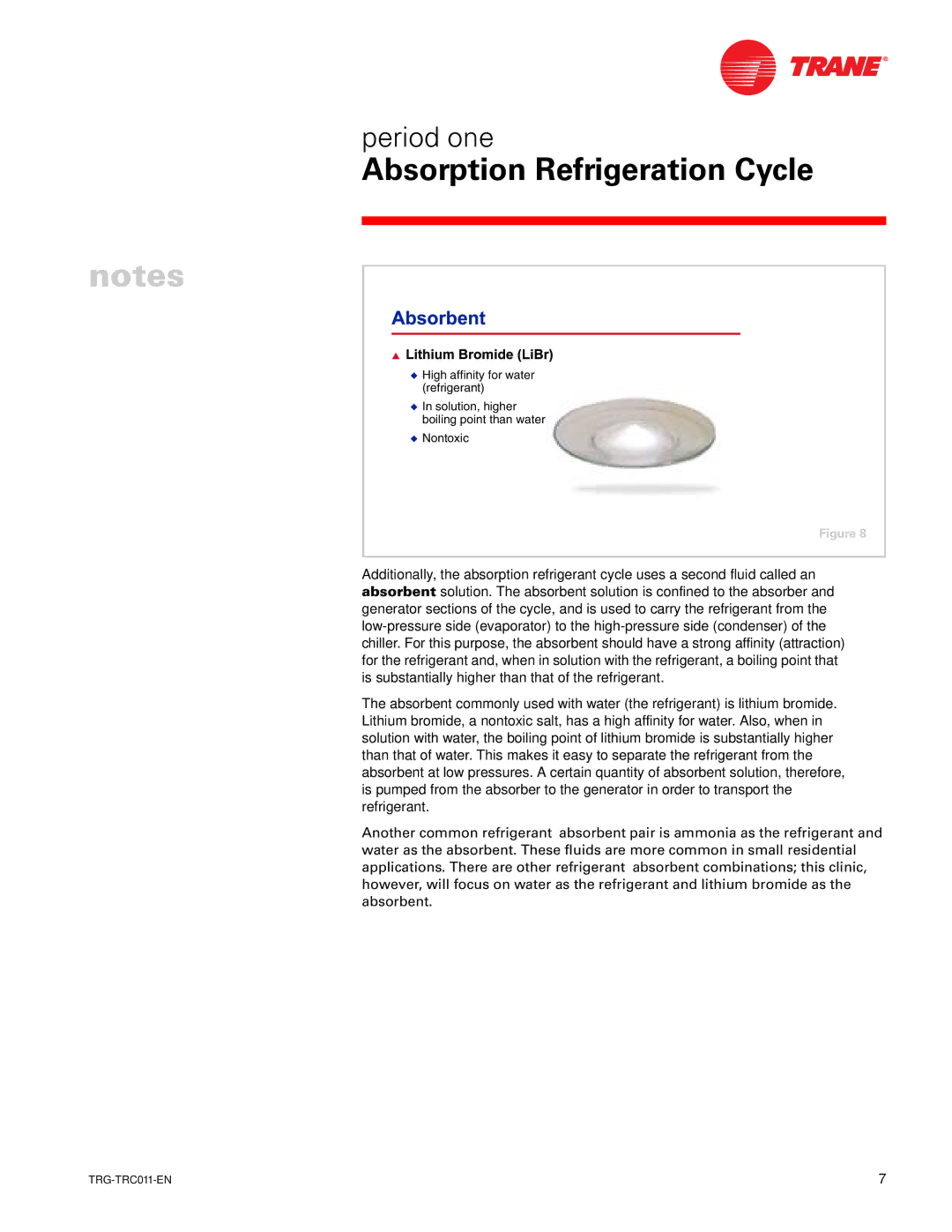
period one
Absorption Refrigeration Cycle
notes
▲ ![]()
![]()
![]()
◆High affinity for water (refrigerant)
◆In solution, higher boiling point than water
◆Nontoxic
Figure 8
Additionally, the absorption refrigerant cycle uses a second fluid called an absorbent solution. The absorbent solution is confined to the absorber and generator sections of the cycle, and is used to carry the refrigerant from the
The absorbent commonly used with water (the refrigerant) is lithium bromide. Lithium bromide, a nontoxic salt, has a high affinity for water. Also, when in solution with water, the boiling point of lithium bromide is substantially higher than that of water. This makes it easy to separate the refrigerant from the absorbent at low pressures. A certain quantity of absorbent solution, therefore, is pumped from the absorber to the generator in order to transport the refrigerant.
Another common
7 |
